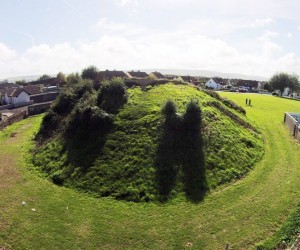A COMMUNITY archaeology project in Dungarvan is seeking to pinpoint the origins of the West Waterford town.
The results of a recent extensive survey carried out by the group suggest that Gallows Hill was possibly the location where Dungarvan was founded.
On Friday 21st August at Dungarvan Town Hall, Geophysicist Kevin Barton revealed the results of the Gallows Hill Community Archaeology Project which was carried out on July 12th and 13th.
The group’s first project was carried out by local volunteers as a Waterford County Museum outreach programme, under the direction of Mr Barton.
The community group aimed to discover features that may reveal the early origins of the mound known locally as ‘Gallows Hill’ which is located on the outskirts of Dungarvan town surrounded by an urban landscape.
Theories as to the origins of the mound or hill over the centuries have included a Barrow, Motte & Bailey Castle, a mound built by Cromwell’s forces or possibly a gallows.
The group posed three questions which they attempted to answer: Is there any evidence for any feature on the top or summit of the mound? Are there any archaeological features in the area surrounding the mound? Is there anything inside the Mound?
As with any form of archaeological survey there are many new questions that arise and work that needs to be completed.
The group plans to publish their final report within the coming months.
The current findings suggest Gallows Hill was built as an important Norman defensive settlement, shortly after the Anglo-Norman invasion in 1169 and before the Castle on the quay was constructed.
This indicates Gallows Hill as possibly the geographical location where Dungarvan was founded, making it an important landmark of the town and county.
Examining the name of the hill/townland along with a documented recording of a hanging in the 17th century and a number of references to the hill as Gibbets hill, would suggest that the hill was used for a time as a hanging gallows.
All involved with the project have thanked the volunteers, Kevin Barton (Landscape & Geophysical Services), Bernadette Guest (Heritage Officer, Waterford City & County Council) for funding the survey and photographer and filmmaker, John Foley for documenting the entire project.
Waterford County Museum will be hosting an exhibition of the group’s results and images documenting the project in the coming weeks.
For more images of the survey log on to www.waterfordmuseum.ie or see the Museum’s Facebook page: Waterford County Museum.


